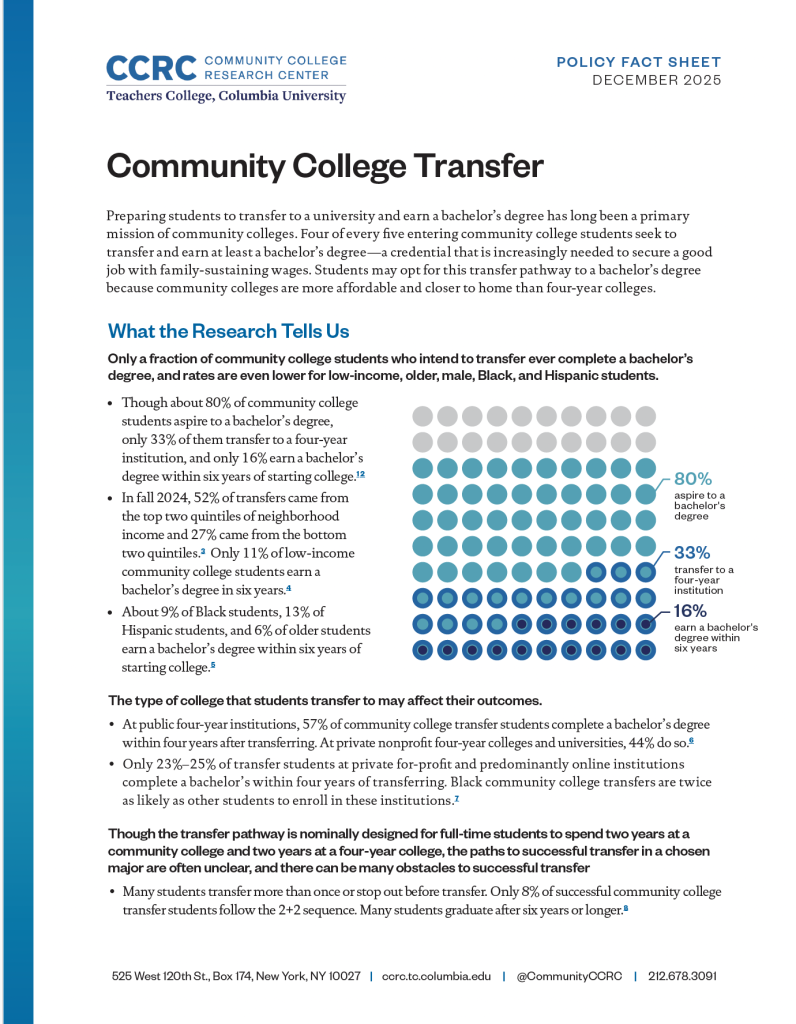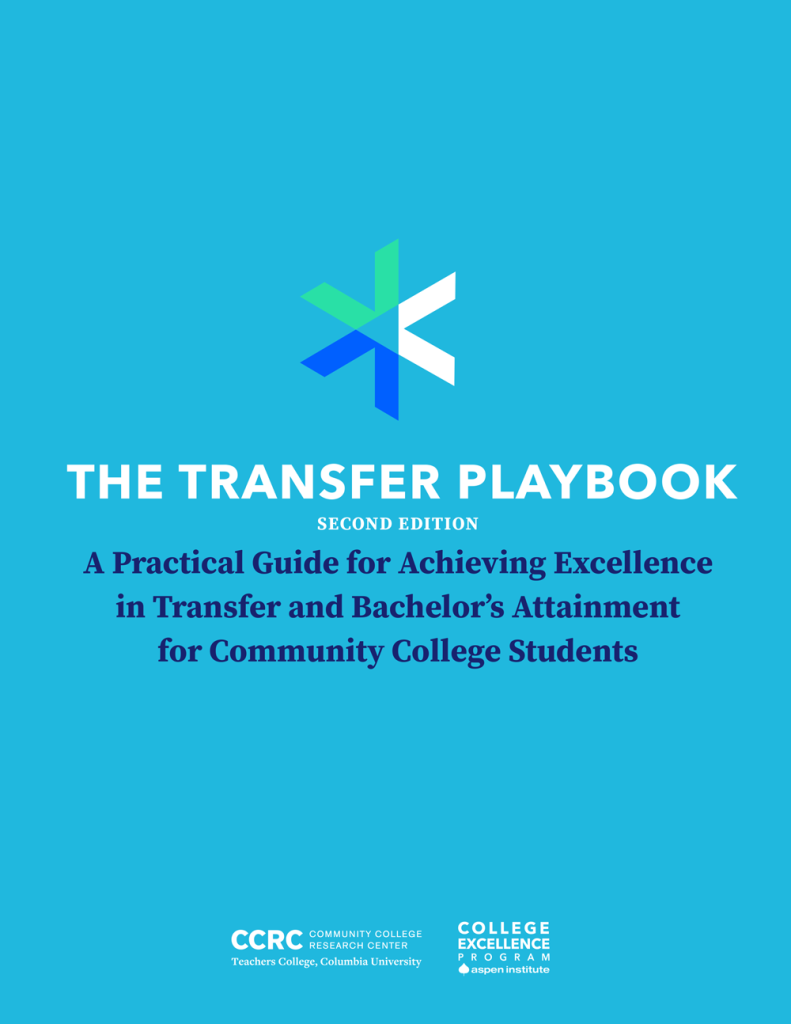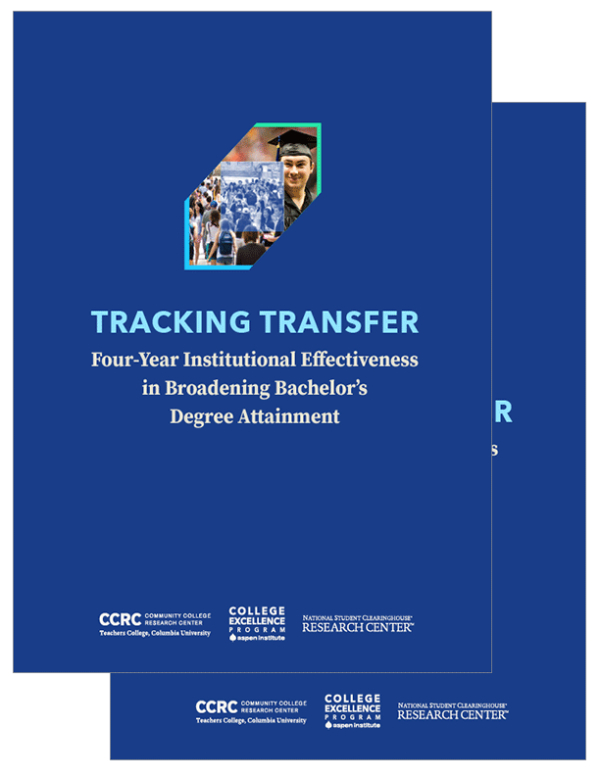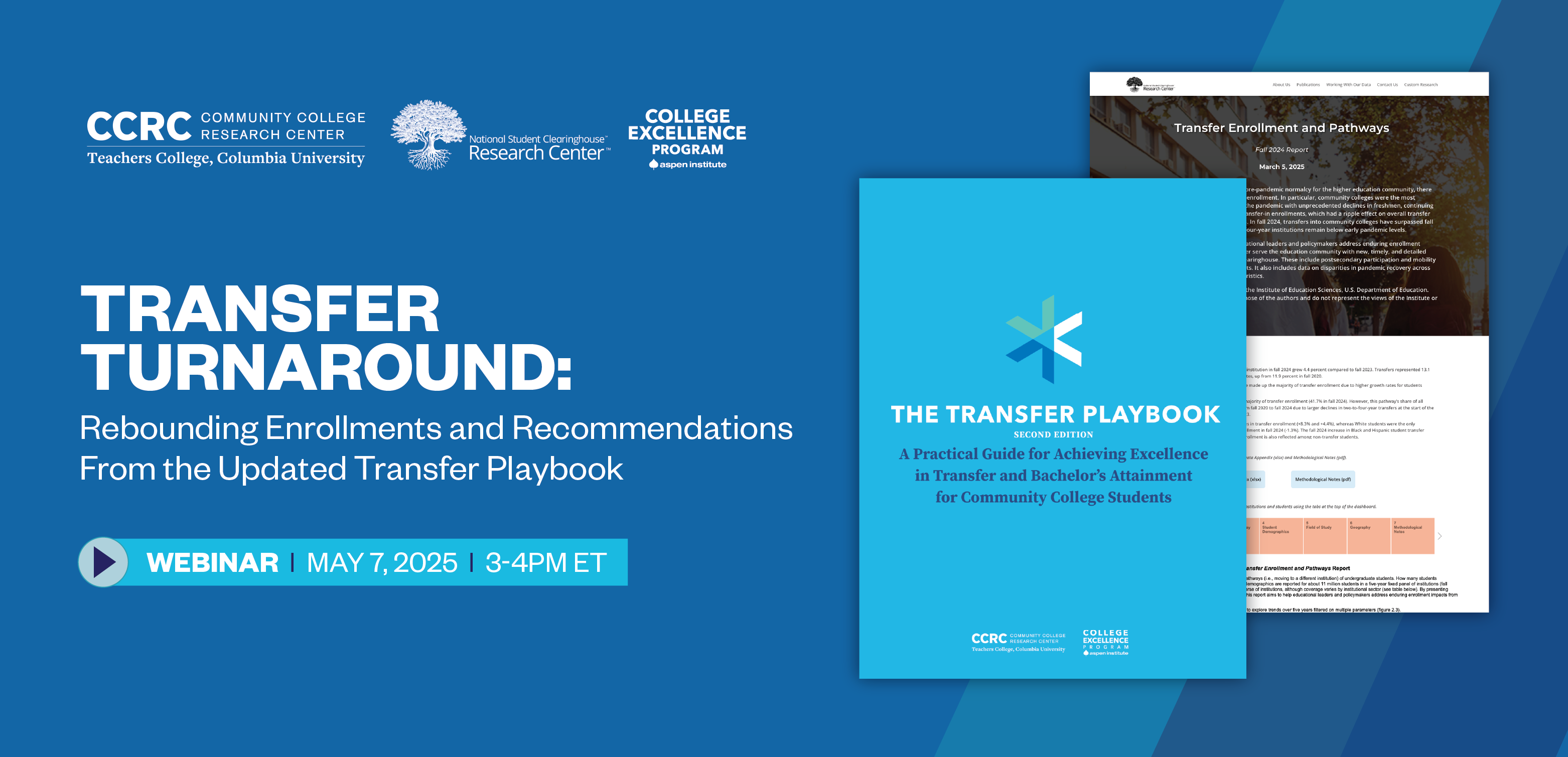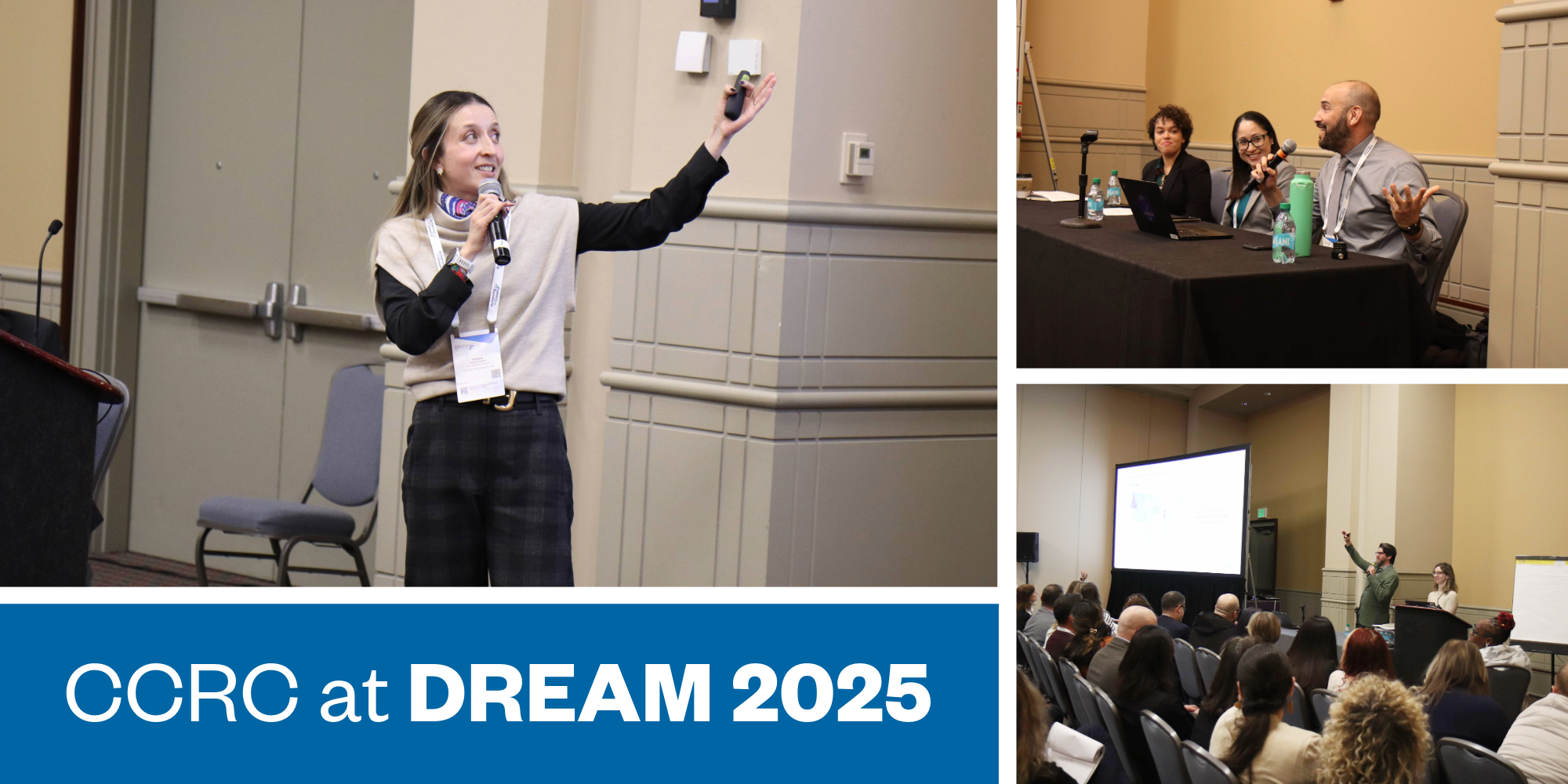Transfer
Community colleges have long served as a launchpad for students pursuing further education at other colleges and universities. The transfer pathway has the potential to provide an affordable route to a bachelor’s degree and beyond for hundreds of thousands of students.
Fast Facts
Of 100 entering degree-seeking community college students, about 31 will transfer to a four-year institution, and only about 15 will complete a bachelor’s degree.
A survey of 90,000 transfer-aspiring community college students found that half never used transfer advising.
Why We Study Transfer
Transfer is a core part of the community college mission. Transfer matters because of the value of a bachelor’s degree for lifetime earnings and other individual benefits as well as the societal benefits of supporting the information economy and a vibrant, diverse democracy. Community colleges are the entry point to college for almost 40% of undergraduates, including the majority of Hispanic undergraduates and the largest number of lowest income students. Most of these students aspire to earn bachelor’s degrees.
Yet, only 28% of Black adults and 21% of Hispanic adults over the age of 25 in the United States hold a bachelor’s degree, compared with 42% of White adults. Similarly, only 15% of young adults from the lowest income backgrounds complete a bachelor’s degree by age 24, compared with 59% of their wealthier peers. With large numbers of students of color and low-income students starting their postsecondary education at a community college, the transfer pathway has the potential to close national gaps in bachelor’s attainment.
Despite this potential, research shows that two- and four-year institutions are underperforming on transfer. Institutional barriers to transfer and bachelor’s completion are major contributors to low transfer outcomes that disproportionately impact low-income students and students of color. CCRC’s research on transfer identifies institutional barriers that inhibit transfer student success, and it elevates promising strategies that community college and four-year partners can implement at scale to achieve substantial improvements.
Featured Publication
Only about a third of community college students transfer to a four-year college, and less than half of those earn a bachelor’s degree within six years of first enrolling. Low-income, older, Black, and Hispanic students transfer and complete bachelor’s degrees at lower rates than students overall. These reports measure the transfer performance of community colleges and four-year institutions and identify strategies for improving transfer practices. An online dashboard provides state-by-state data.
Key Terms
Credit transferability
Credit applicability
Excess credits
Structured transfer pathways
What We Are Learning From Effective Transfer Partnerships
Mapping pathways from community college to university helps students explore academic and career fields of interest and transfer into a specific bachelor’s major.
Developing individualized transfer plans based on regularly updated institution- and major-specific transfer guides allows students to answer the question, “Will my transfer credits apply to my bachelor’s degree?”
Providing proactive advising and supports from community college entry to bachelor’s completion helps students explore options early on, revise plans as needed, and progress successfully before and after transfer.
Strengthening teaching and supports in students’ early community college coursework and embedding active and experiential learning into every program improves transfer student success.
Building pathways into high school, starting with dual enrollment, allows community college and university partnerships to create a solid foundation for transfer success.
Sharing data allows community colleges and universities to monitor student progress and improve partnership practices. The most useful data is disaggregated by race/ethnicity, income, sending/receiving institution, and student major.
Further Reading
Transfer
Our Transfer Experts
Read More
View all of our publications on transfer.

